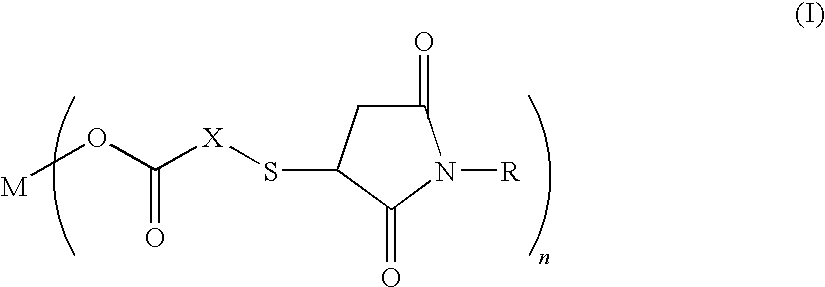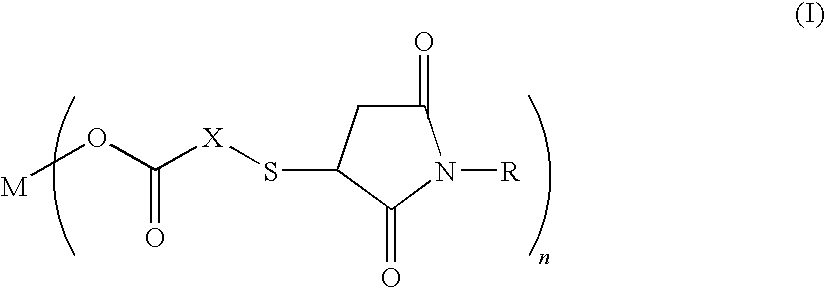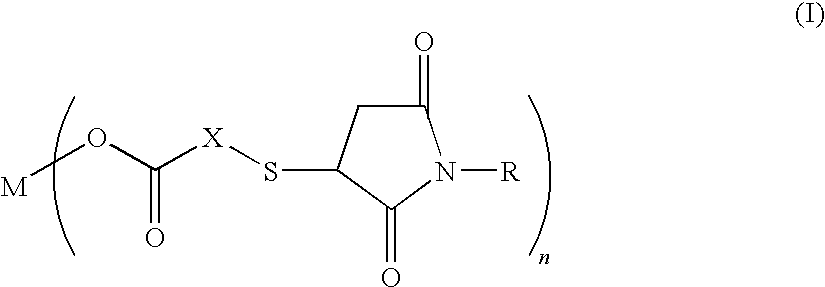Salt of carboxylic acid containing N-substituted succinimide thio group and unvulcanized rubber composition containing the same
a carboxylic acid and succinimide thio group technology, applied in the field of carboxylic acid salts containing nsubstituted succinimide thio group and unvulcanized rubber compositions containing the same, can solve the problems of slow vulcanization reaction, inferior heat aging resistance, and breakage, and achieve high reaction efficiency of the substitution reaction with the rubber ingredient, high reaction efficiency to the amount of said carboxylate added, and high reaction efficiency
- Summary
- Abstract
- Description
- Claims
- Application Information
AI Technical Summary
Benefits of technology
Problems solved by technology
Method used
Image
Examples
examples
[0029]The present invention will now be explained in further detail with reference to the Examples and Comparative Examples shown below, but the present invention is by no means limited to these Examples.
[0030]1) Synthesis of Salt of Carboxylic Acid Containing N-Substituted Succinimide Thio Group
[0031]30.8 g (0.20 mol) of thiosalicyclic acid and 34.6 g (0.20 mol) of N-phenylmaleimide were reacted in 300 g of methylethylketone at 90° C. for 5 hours. After the end of the reaction, the reaction mixture is concentrated under reduced pressure at 90° C. to obtain 65.0 g (yield 99%) of the compound (molecular weight 327.4) (hereinbelow, referred to as the “compound 1”) having the following formula:
[0032]
Next, a 300 ml three-neck round-bottom flask provided with a thermometer and a magnetic stirrer was charged with 70 g of methanol and 32.7 g (0.10 mol) of the compound 1 and 2.22 g (0.055 mol) of magnesium oxide which were then reacted at 70° C. for 2 hours. Thereafter, the reaction mixture...
PUM
| Property | Measurement | Unit |
|---|---|---|
| reaction temperature | aaaaa | aaaaa |
| temperature | aaaaa | aaaaa |
| temperature | aaaaa | aaaaa |
Abstract
Description
Claims
Application Information
 Login to View More
Login to View More - R&D
- Intellectual Property
- Life Sciences
- Materials
- Tech Scout
- Unparalleled Data Quality
- Higher Quality Content
- 60% Fewer Hallucinations
Browse by: Latest US Patents, China's latest patents, Technical Efficacy Thesaurus, Application Domain, Technology Topic, Popular Technical Reports.
© 2025 PatSnap. All rights reserved.Legal|Privacy policy|Modern Slavery Act Transparency Statement|Sitemap|About US| Contact US: help@patsnap.com



